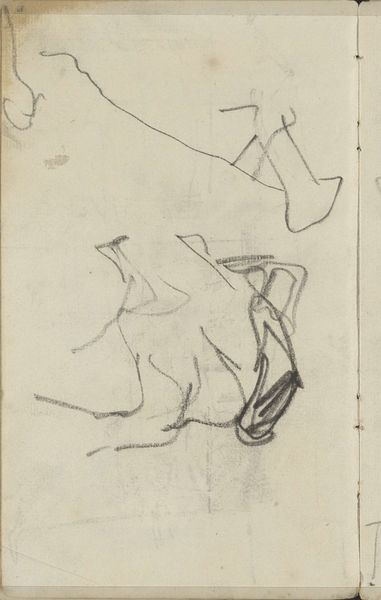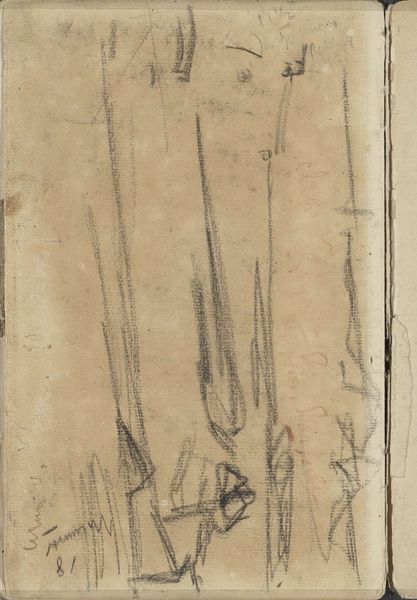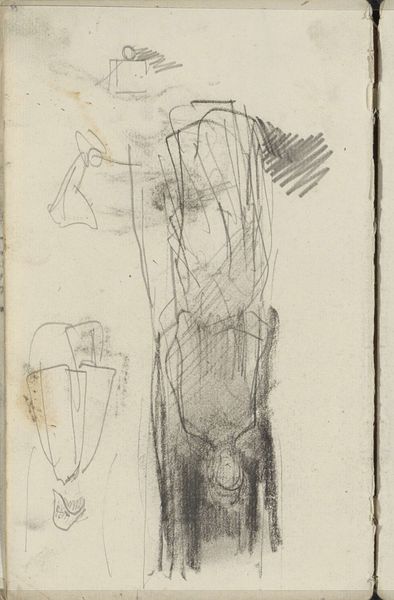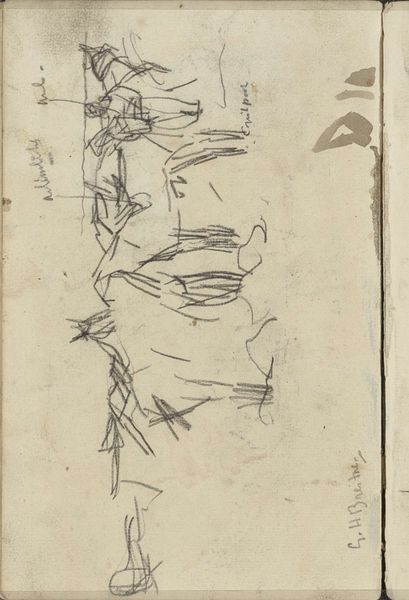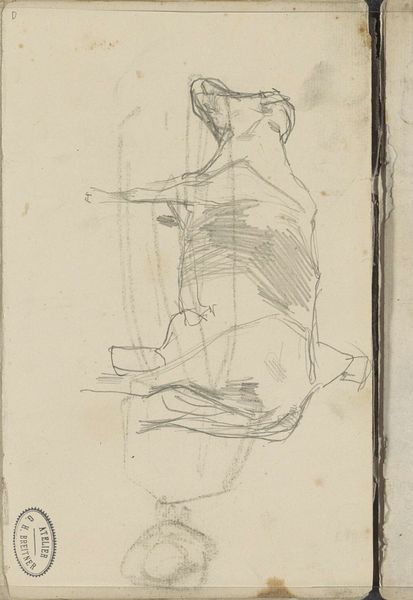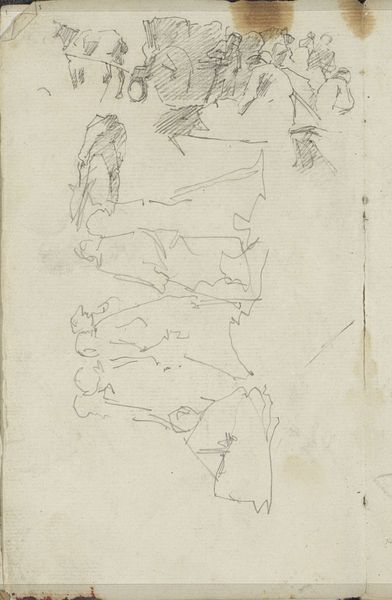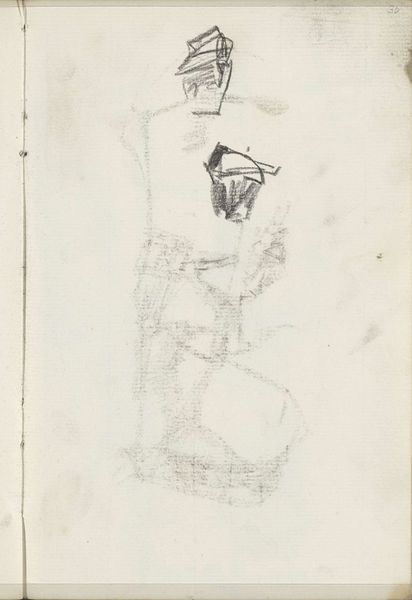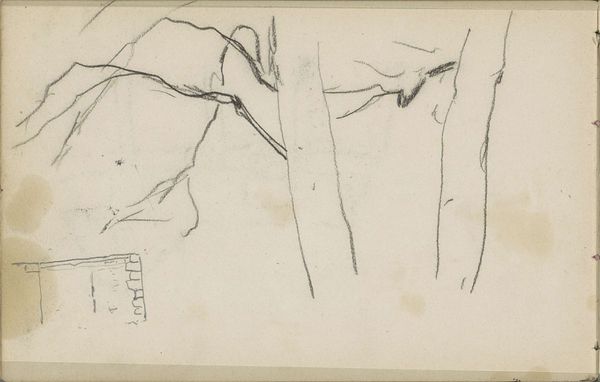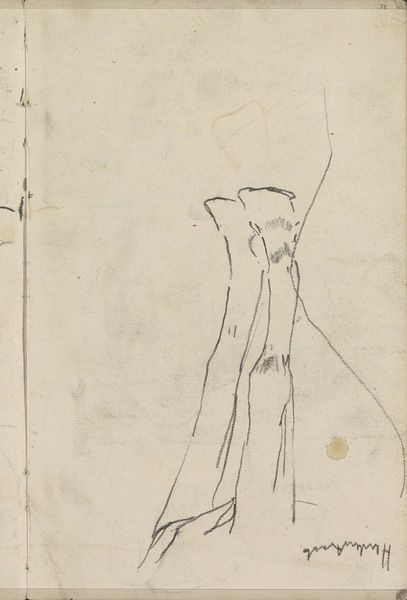
Twee figuren op een weg en vrouwenhoofden Possibly 1882 - 1886
0:00
0:00
drawing, paper, pencil
#
portrait
#
drawing
#
amateur sketch
#
aged paper
#
toned paper
#
light pencil work
#
impressionism
#
pencil sketch
#
sketch book
#
figuration
#
paper
#
personal sketchbook
#
idea generation sketch
#
sketch
#
pencil
#
line
#
sketchbook drawing
#
sketchbook art
Copyright: Rijks Museum: Open Domain
Editor: This is "Twee figuren op een weg en vrouwenhoofden", or "Two Figures on a Road and Women's Heads," a pencil drawing on paper, probably made between 1882 and 1886, by George Hendrik Breitner. It looks like a page from a sketchbook. What does this informal, almost intimate view into the artist's process suggest to you? Curator: Well, looking at this sketch from a historical viewpoint, I am drawn to the immediacy and the inherent democratizing aspect of sketchbooks. Consider the time Breitner was working; the late 19th century saw increasing accessibility of art materials and a growing interest in capturing everyday life. A sketchbook like this serves as evidence of an artist engaging directly with his surroundings, outside the confines of a formal studio. Who do you think the figures here could represent, and why do you suppose Breitner chose to sketch them? Editor: I’m guessing ordinary people he encountered. Maybe this was how he cataloged figures and poses, you know, like a visual notepad he’d later use for paintings? Curator: Exactly. Sketchbooks served as crucial tools for artists exploring the modern world, especially during the rise of Impressionism and similar movements. But there's a social aspect here too. Art shifted focus toward depicting everyday life. A quick, accessible medium like pencil allowed for capturing fleeting moments in the urban landscape. What is your feeling regarding the aesthetic in this snapshot of the artist’s workflow? Does the speed influence what can be appreciated? Editor: Absolutely. It reveals the artist’s thinking and experimentation in real time. There's an honesty and unpretentiousness here that can be easily missed in finished works. I am seeing how deeply societal change and cultural production are interwoven here! Curator: Precisely! These humble sketches contribute significantly to a larger historical narrative, expanding the social accessibility and inclusivity of art within a wider social and cultural context. I never expected a seemingly unfinished sketch could carry such powerful information regarding societal change.
Comments
No comments
Be the first to comment and join the conversation on the ultimate creative platform.
